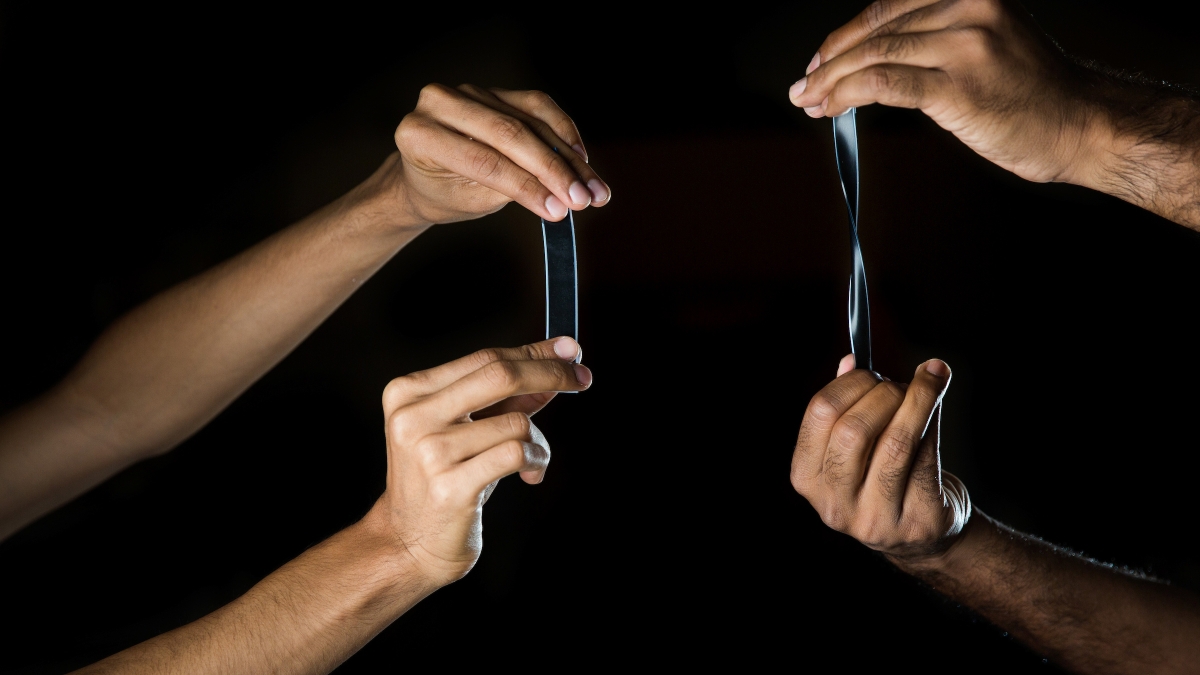Think your tech is cool? Wait until you see what Umit Ogras is working on.
“If we accomplish this, smartphones and tablets will have a new form,” said the electrical engineer at Arizona State University. “You don’t always carry your phone. You always wear a shirt.”
Umit Ogras
Flexible hybrid electronics can be bent or stretched. Picture pulling a wand from your pocket, unfurling a scroll, and watching a movie on a desktop-size screen.
Watching TV at home? Wave your arm and change channels. In the hospital? A disposable patch on your arm will use wireless connections to transmit data about blood pressure, heart rates and other vital signs to doctors and nurses. Wear a Fitbit watch when you go for a jog? That’s going to disappear into your sleeve, and it’s going to have scores more functions.
Ogras, an assistant professor in the School of Electrical, Computer and Energy Engineering in the Ira A. Fulton Schools of Engineering, recently won a five-year, $500,000 early-career development grant from the National Science Foundation to continue developing flexible hybrid electronics.
“It makes wearable devices beyond watches,” Ogras said. “We want to make them totally flexible.”
Computers have gone from room-size in the 1950s to desktops in the 1980s to handhelds today. Ogras’ research takes them into the next realm.
“The smartphone can disappear if we wear it in our clothes,” he said.
Health, motion and gesture monitoring will revolutionize personal devices. Ogras envisions mute people wearing a glove that will interpret sign language and literally “voice” communication. Wheelchairs will be controlled by arm motion instead of a joystick. Maps and GPS can be incorporated into devices.
“It knows your location in the house and where you want to go,” Ogras said.
Graduate students show an example of a traditional electric board (left) and the flexible, solar-powered board that can be used in wearable monitors in ASU Assistant Professor Umit Ogras' lab in Tempe on June 28. Photo by Deanna Dent/ASU Now
Three of the biggest problems Ogras is working to crack are the cost, size and battery.
His electronics use photovoltaic cells instead of batteries. The solar panels charge a small flexible battery during the day, which powers the electronics at night. The battery is 200 times less powerful than the battery in a typical smartphone. (It’s also 50 times lighter than a typical smartphone battery.) Energy harvesting is crucial.
Ogras has been working on the research for three years. He worked at Intel Corporation on smartphones — systems running on chips. His devices will run systems on polymer.
“We hope other people will start working in this domain,” he said.
The NSF Faculty Early Career Development (CAREER) Program offers awards in support of early-career faculty who have the potential to serve as academic role models in research and education and to lead advances in the mission of their department or organization.
Fourteen ASU faculty won the award this year. Typically the NSF funds about 350 CAREER faculty each year.
Top photo: ASU students show an example of a silicon-based element with embedded electrodes that will be able to sense movement in body parts in Assistant Professor Umit Ogras' lab. Photo by Deanna Dent/ASU Now
More Science and technology

Study reveals genetic insight into desert survival
The deserts of the American Southwest are home to the Mojave and Sonoran desert tortoises, two seemingly similar yet genetically distinct species of turtles. These tortoises, adapted to different…

Study reveals lasting effects of common weed killer on brain health
Environmental exposure to toxins in the air, water or certain chemicals can increase the risk of ill health effects, including to the human brain.The human brain is an incredibly adaptable organ,…

ASU grad to use science to get an edge on crime
Editor’s note: This story is part of a series of profiles of notable fall 2024 graduates.As a child growing up in Pinetop, Arizona, Giavanna Caruth's family experienced a tragic loss in the early…


